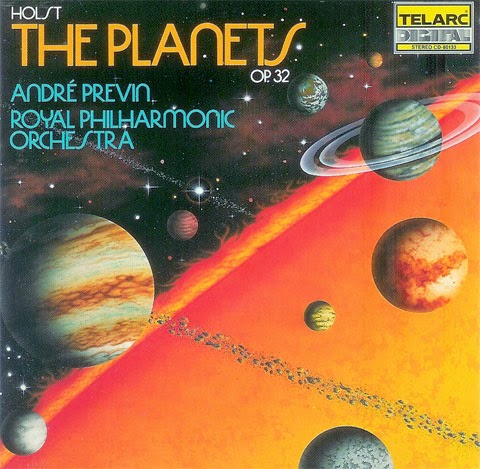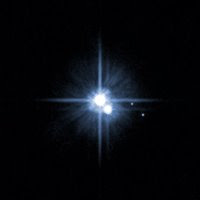1914 musical opus inspired by astrology and horoscopes - Holst's Op.32, The Planets
The Planets, Op. 32, is a seven-movement orchestral suite by the English composer Gustav Holst, written between 1914 and 1916. Each movement of the suite is named after a planet of the Solar System and its corresponding astrological character as defined by Holst.
The concept of the work is astrological rather than astronomical (which is why Earth is not included): each movement is intended to convey ideas and emotions associated with the influence of the planets on the psyche, not the Roman deities. The idea of the work was suggested to Holst by Clifford Bax, who introduced him to astrology when the two were part of a small group of English artists holidaying in Majorca in the spring of 1913; Holst became quite a devotee of the subject, and liked to cast his friends' horoscopes for fun.
Holst also used Alan Leo's book, "What is a Horoscope?" as a springboard for his own ideas, as well as for the subtitles (i.e., "The Bringer of...") for the movements. The Planets as a work in progress was originally scored for a piano duet, except for "Neptune", which was scored for a single organ, as Holst believed that the sound of the piano was too percussive for a world as mysterious and distant as Neptune. Holst then scored the suite for a large orchestra, and it was in this incarnation that it became enormously popular.
Holst's use of orchestration was very imaginative and colourful, showing the influence of Arnold Schoenberg and other continental composers of the day rather than his English predecessors. The influence of the late Russian romantics such as Nikolai Rimsky-Korsakov and Alexander Glazunov is also notable, as it is in Igor Stravinsky's great early ballets. Its novel sonorities helped make the work an immediate success with audiences at home and abroad. Although The Planets remains Holst's most popular work, the composer himself did not count it among his best creations and later in life complained that its popularity had completely surpassed his other works. He was, however, partial to his own favourite movement, "Saturn".
The suite has seven movements, each named after a planet and its corresponding astrological character:
Mars, the Bringer of War
Venus, the Bringer of Peace
Mercury, the Winged Messenger
Jupiter, the Bringer of Jollity
Saturn, the Bringer of Old Age
Uranus, the Magician
Neptune, the Mystic
The concept of the work is astrological rather than astronomical (which is why Earth is not included): each movement is intended to convey ideas and emotions associated with the influence of the planets on the psyche, not the Roman deities. The idea of the work was suggested to Holst by Clifford Bax, who introduced him to astrology when the two were part of a small group of English artists holidaying in Majorca in the spring of 1913; Holst became quite a devotee of the subject, and liked to cast his friends' horoscopes for fun.
Holst also used Alan Leo's book, "What is a Horoscope?" as a springboard for his own ideas, as well as for the subtitles (i.e., "The Bringer of...") for the movements. The Planets as a work in progress was originally scored for a piano duet, except for "Neptune", which was scored for a single organ, as Holst believed that the sound of the piano was too percussive for a world as mysterious and distant as Neptune. Holst then scored the suite for a large orchestra, and it was in this incarnation that it became enormously popular.
Holst's use of orchestration was very imaginative and colourful, showing the influence of Arnold Schoenberg and other continental composers of the day rather than his English predecessors. The influence of the late Russian romantics such as Nikolai Rimsky-Korsakov and Alexander Glazunov is also notable, as it is in Igor Stravinsky's great early ballets. Its novel sonorities helped make the work an immediate success with audiences at home and abroad. Although The Planets remains Holst's most popular work, the composer himself did not count it among his best creations and later in life complained that its popularity had completely surpassed his other works. He was, however, partial to his own favourite movement, "Saturn".
The suite has seven movements, each named after a planet and its corresponding astrological character:
Mars, the Bringer of War
Venus, the Bringer of Peace
Mercury, the Winged Messenger
Jupiter, the Bringer of Jollity
Saturn, the Bringer of Old Age
Uranus, the Magician
Neptune, the Mystic



.jpg)

Comments
Post a Comment